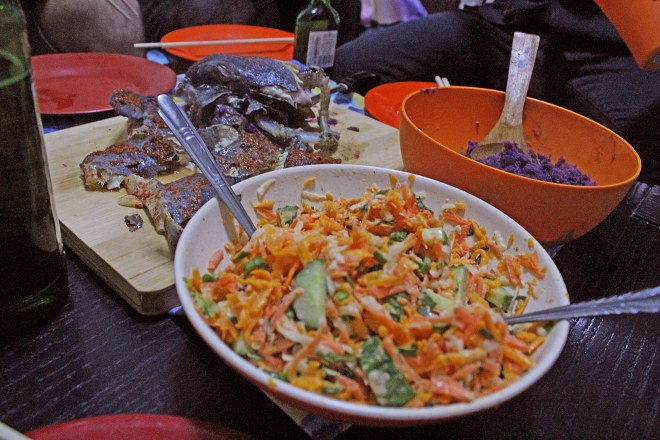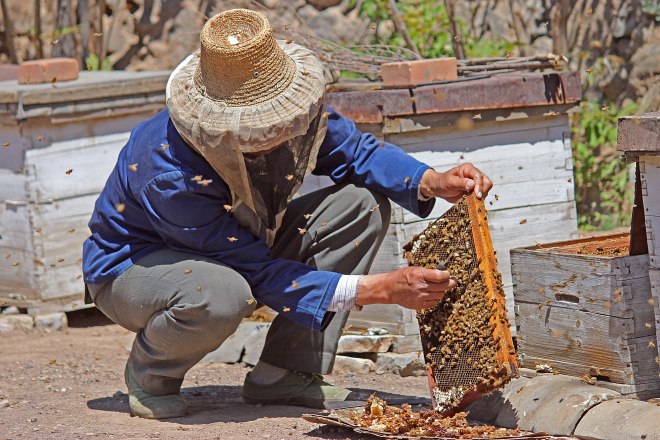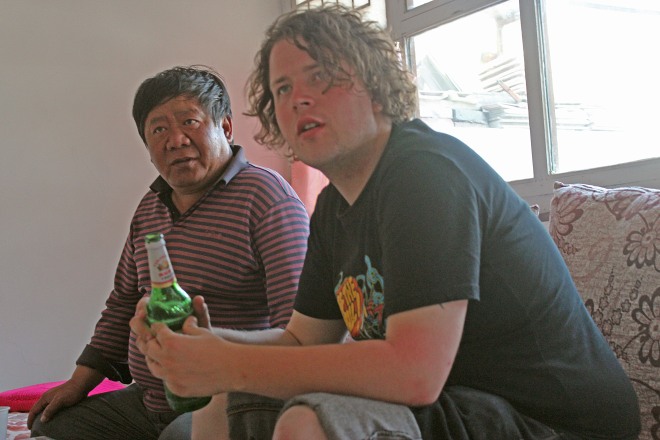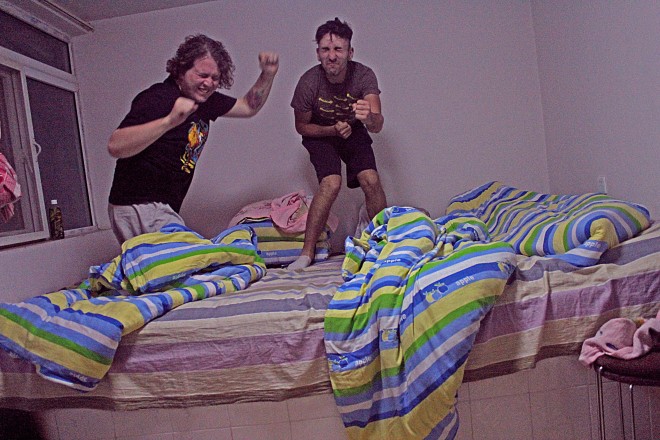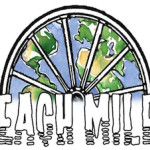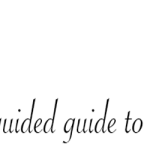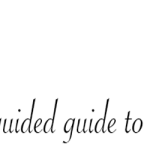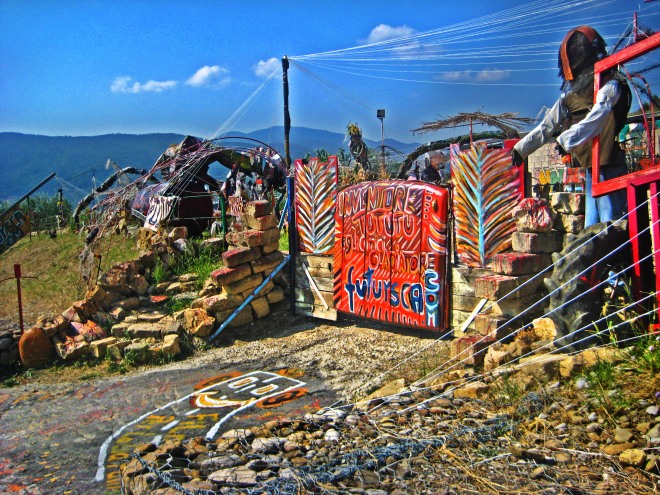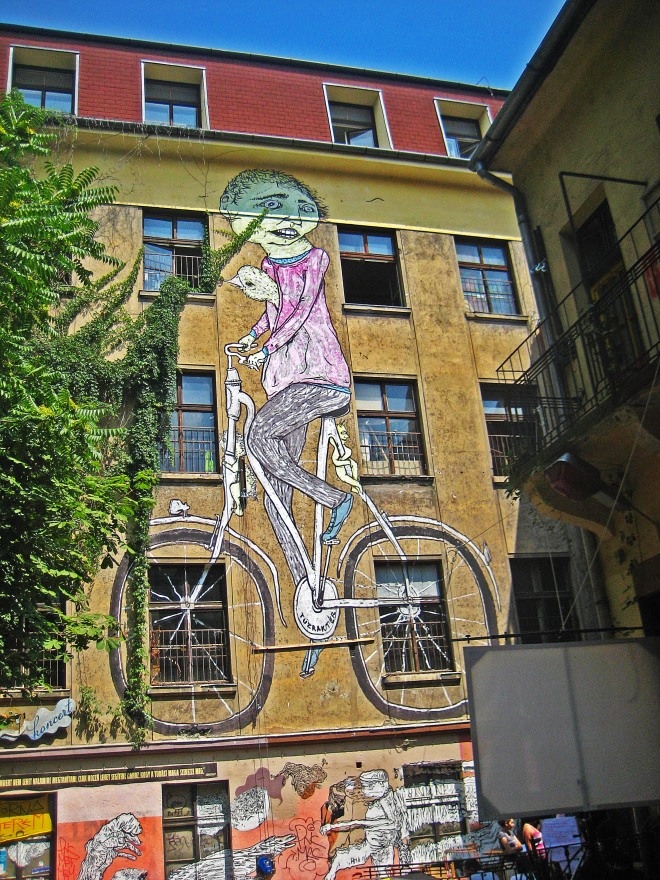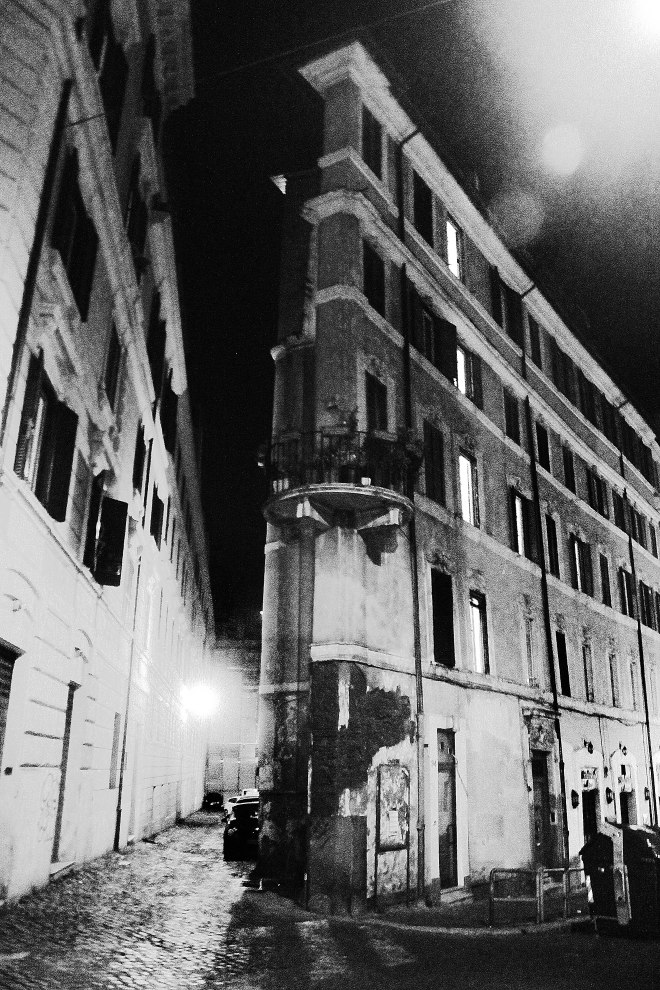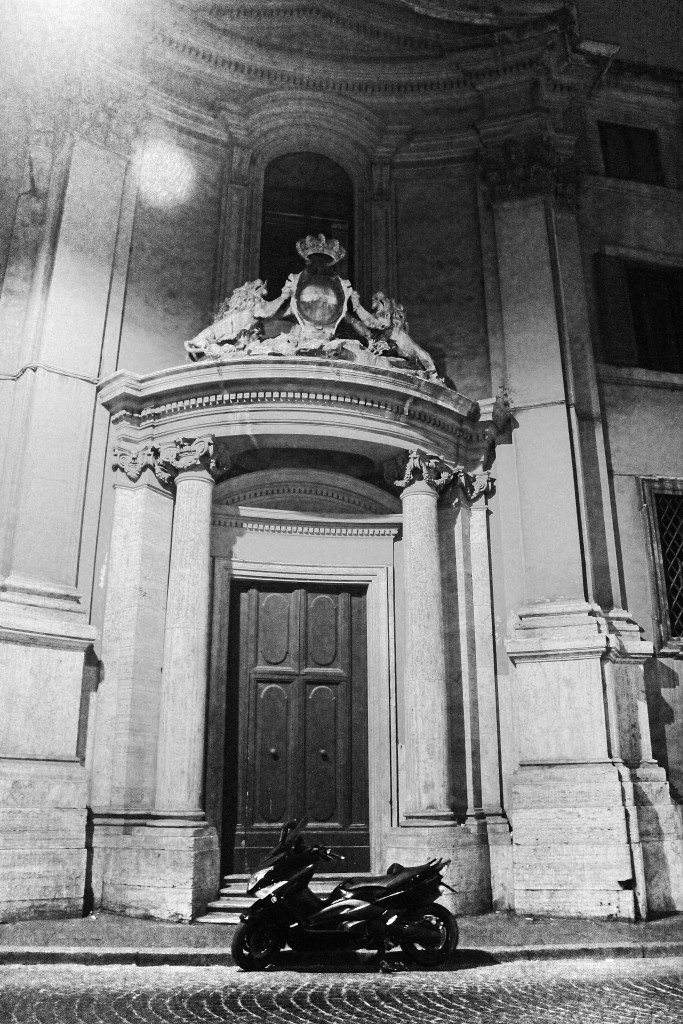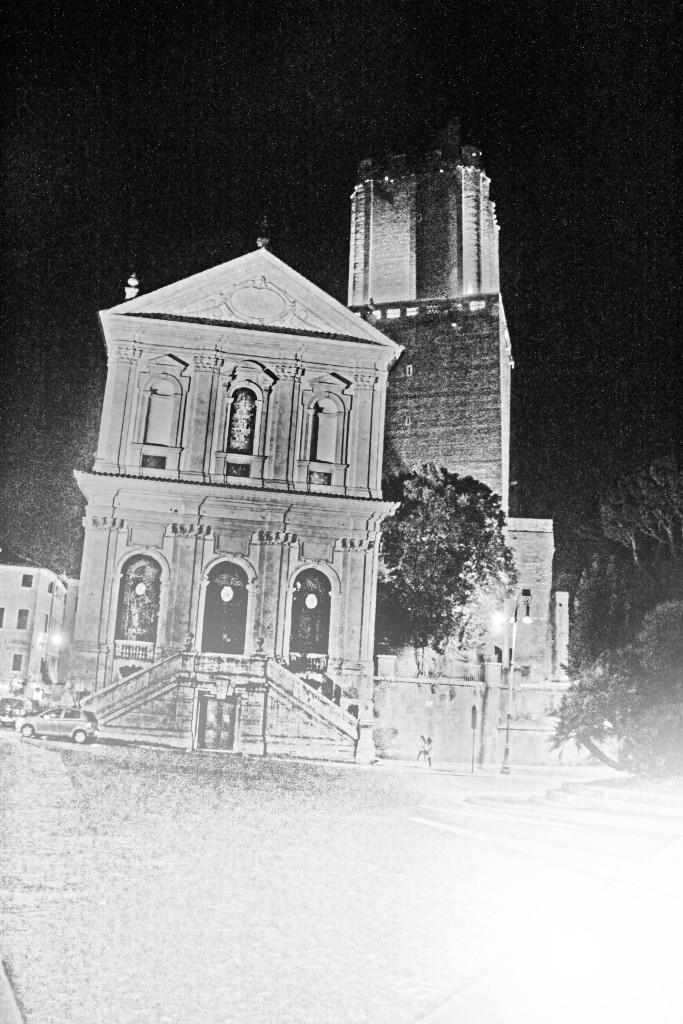Episode 6 – Into the Swing of Things – Part 1 -Cuandixia
For the video check out: https://www.youtube.com/watch?v=aOq2LDegb1Q&index=11&list=PL59E469A3DF414464
Some of my foreign friends hated Beijing. They hated the smog. They hated the crowded streets. The noise. The Chinese-ness of it all. To be fair, many of them had never been outside of their own countries before. They were mostly young, teaching kids who only understood half of what they said and were use to a life filled with peanut butter and cheese and alcohol that wasn’t Baijou. Yet for them, Beijing was perfect, for as a metropolitan, they could engage on all of these luxuries. They didn’t ever have to go beyond their comfort zones, eat food they didn’t know, see anything besides the inside of chi-chi bars, malls and Mcdonalds.
My girlfriend and I, on the other hand, had come to Beijing to experience Beijing. To meet the people as best as we could, to eat as much delicious food as we could shove into our hamster cheeks and to explore, explore, explore!
Part of that exploration was food. Not just going to restaurants, but Rachel is an excellent chef and to have all these new products at your fingertips, it would be a shame not to get creative, try local recipes, and use new products to create new spinoffs. The wet markets were a blast to visit, loud, chaotic, unrefrigerated meats, hand-pulled noodles, life fish, frogs sold out of garbage bags, you name it, we saw it, we bought it, we ate it. That became a weekly event in our household. Going to the local market, seeing familiar faces, trying new veggies or fish, buying a new treat from the bakery upstairs, fitting in as best as we could.
Part of that fitting in was going beyond, seeing the MUST SEES and partaking in leisure activities. That includes visiting places beyond central Beijing. Weekend trips, being able to escape Beijing for a couple days to investigate it’s outskirts, it’s green, quieter, cleaner, mountainous surroundings, where life is still lived at a slow pace, possibly an echo of a Beijing long ago, was a way of contextualizing Beijing and it’s people. One of those places was the Ming era village of Cuandixia.
Public transit in China is like Russian Roulette. Nerve racking, ridiculous, yet in this instance, the cause of death will be being lost somewhere in the mountains or missing essential organs. Eeny Meeny Mino Mo. The bus numbers constantly change, have infrequent hours, don’t go to where they say they are going to go and sometimes, stop for inordinate amount of time, as the drive smokes ten packs of cigarettes, has a swig of some that is definitely not water and inhale food equivalent to 2 meals and a half.
Yet the process to get to Cuandixia was quite seamless. One switch and a few hours and we (myself, Rachel and our friend, the wonderful, quite Mandarin fluent, Cian) were there, Cuandixia.
Though it is granted a quick blurb in Lonely Planet, no one I knew (surprise) had been there or knew it even existed. And really, without any basis for considering the pros and cons of coming, left us delightfully surprised and in unexpected awe (though I am in awe of Velcro shoes, so it’s not that much of a stretch). Like many ancient place in China, the government has caught on to the conceit that people are interested in visiting them. So before you enter the town, there is an authentic, ancient tollbooth, with ancient tollbooth guards, appropriately dressed, charging you an entry fee, for which you receive ancient relics (tickets). You can see that the town has received some reconstructive surgery, some botox injections, that may have one questioning the authenticity of some of the structures, some of the quite quaint activities that were going on, in the open, as if for demonstration and entertainment purposes. And yet, beyond the signage, the hotels, whether it was a ruse or not, I did feel as if a slower pace of life had been maintained undisturbed here.
The Ming Dynasty (1368-1644CE) era village has a wealth of sites and activities to see. In a backyard we saw a guy making doors from scratch and in another yard we saw a guy, smile plastered on his face, messing around with bees with just his bare hands. There are numerous temples here, including the Temple of the Goddess of Fertility and Temple of Dragon King Subduing Demons (basically temples for all important occasions), restaurants to indulge in local cuisines like edible plants, mushrooms and wild rabbit (all very simple, but tasty) and old Maoist graffiti to see (basically the Chinese Banksy…kidding…they usually say stuff like “Mao is dope” or “follow Mao, YOLO!”), as well as a lot of old ancient structures to climb, peak into, smell, taste and attempt to move (well covers are heavy). There are even local knickknacks you can pick up, like scary cat stuffies and honey from the dude who was asking to get stung (wackjob!).
For a worthwhile panoramic view of the town within the lush green trees and mountainous surroundings, I recommend you walk up the path on the otherside of the road from the main village, passed the Temple of the Fertility Goddess (love me some fertility), and climb as high as you can up the stairs. Tons of photo ops, meditation points, plus moments where you feel like you are in a real life Skyrim, climbing up rock face to get the ultimate view, forgetting exactly what the hell you are suppose to be doing in this mission. From above, you can see into the ancient courtyards, see the lovely veggie gardens, the ancient grey slat roofs, and the picturesque retaining wall that surrounds the village, as well as people walking around performing their daily chores. Looks straight out of Chinese Lord of the Rings mixed with the Chinese version of the opening scene from Beauty and the Beast (NIHAO, NIHAO).
After exploring the town for several hours and eating, we looked at the map and noticed there was another town up the road a little bit named Baiyu. Rather than staying put for the night, we decided to head up to this other town, thinking possibly it was beyond the tourist machine. From a smattering of reading that exist on the internets about Baiyu, one can conclude that no one visits this place or only pass by, recording as many details they can from a fast moving vehicle.
The day was hot and the sun reflecting of the road was cooking us. Smoking some not so great hasheesh made our slow jaunt towards heat stroke a little more hilarious than it should be. But Cian and I had other plans besides simply getting to Baiyu. As we walked through the valley, rocky cliffs on either side, lush green peaking over their ledges, branches, swaying the breezes, catching and releasing the twinkling light of the sun, we noticed the numerous caves that pocked the side of the incline on either side. They beckoned us like Amsterdam window prostitutes.
“Rachel, wait here, we’ll be right back!”
Rachel looked doubtful. The last time I said that I had left her in a Chinese cemetery alone and got lost in 800 meters of nettle bushes, only to return to her after 45 minutes, scraped, bleeding and guilty as charged of abandonment.
Cian and I saw our cave and scrambled up some “stairs” towards it. The footing was far from stable and sunstroke didn’t help us keep our balance. But finally, we made it, into the mouth of a cave. Headbanging session and photos? Of course!
Getting down from the cave was a bit trickier. I went first, which was a terrible idea and involved me dodging falling rocks from that were being loosened by Cian’s decent. The final bit, involved surfing on a large rockslide, almost being partially covered by it. But what a way to go, right? Rockslides would be great without the “rock” part. I love slides! So misleading they are!
Anyways, after an hour more of slow meandering, we made it to Baiyu. The ancient town with it’s old courtyard grey stone houses, its wandering chickens, dogs and cows, its villagers who looked aghast to see us wandering down the main street, was the real deal. There were small signs of infrastructure, a sign here, a new pavilion there, but nothing complete. The houses themselves were dilapidated, unaltered and ultimately looked as if they had been lived in for 600 years, which undoubtedly, some of them may have been.
We explored the main streets, the alleys, looking over walls, trapsing into open courtyards, waving at villagers, who simply returned our flapping hands with wide-eyed stares and concerned expressions. The village, not surprisingly was made up of mostly the old and young. Presumably, the adults had to find work elsewhere. We stumbled upon a building plastered red posters and caligraphied writing. Entering the partially ajar door, we noticed it was the town hall of a bygone era, complete with 60-year-old sound system, pictures of Mao, Stalin, Marx and Engels on the wall. Free condoms were sitting in an ancient rack in the front. The condoms, like the rack, were ancient, but it was tempting to see, like milk, how far past the expiry date would they still be good. Kidding. Horrible joke. Cian is a proud father and regrets nothing (another joke).
It was getting dark and thanks to Cian, we found a place to stay, inside of a local family’s courtyard home. For dinner we had wild hare and beer as the owner of the establishment, chainsmoking, watching Chinese game shows and smiling and simultaneously watched the crazy foreigners approvingly eat his wife’s food. Though it was hot out, we slept on a traditional “kang” bed, which in the winter, can have a fire lit under it to heat it. The next morning, tea, eggs, blechy millet soup and no plans. We asked the proprietor of the establishment if there was anything worth exploring around here. He handed us a brochure with pictures of The Great Wall. We laughed thinking he thought we meant in the Beijing area in general. He turned to Cian and rattled off some Mandarin. Cian explained that there was a section of the wall an hour and a bit by foot around here that no one knew about really and was discovered by shepherds who used to area to graze their goats in. We hadn’t the time to see it, but made an oath that we would return to find it.
Walking back to Cuandixia and visiting some small pools hidden in deep crevices along the road, I realized that’s what exploration is about, going to the edge of the tourist “map” and then going beyond, simply walking off the grid and realizing the world isn’t flat and you will not fall off. Many pleasant “wow” moments are out there to discover and share.
For directions to Cuandixia and more information, scroll to the bottom of the page!
Follow me on twitter @pedaleachmile
Again, the video of the trip and more China, cycling, travel videos are at:
DIRECTIONS and INFORMATION
CUANDIXIA (爨底下)
Cost: 35 RMB
Recommended Time: Meh…I hate saying, TAKE ONE HOUR or it’s GOOD FOR FOUR HOURS. There are temples to see, food to eat, activities to see, walking to do, relaxing to partake it. An easy overnight or weekend could be made of exploring.
Bring: Toilet paper is a MUST, water, sunglasses, hiking appropriate shoes.

